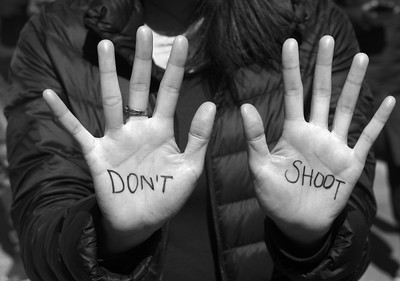About the same time WCC was bringing armed police officers to campus, the Toronto district schools were removing them. Toronto is the largest school district in Canada, with 250,000 students. Toronto brought SROs on campus following the shooting death of a black high school freshman in 2008.
By 2017, students, parents and teachers made it clear that the district needed to visit the SRO question again. At that time, SROs worked in 45 of the district’s high schools, mostly in poorer neighborhoods with higher concentrations of minority residents. In response to the community, the Toronto school board suspended the SRO program. This removed officers from the schools while the trustees reviewed the issue.
During the program suspension, the district surveyed more than 15,000 students, 1,000 staff members and 500 parents. The goal of the survey was to determine both how the presence of the armed officers made them feel, and to learn more about the behavior of SROs on campus.
More than half of the students said the SROs made them feel safer while in school. But nearly 15% of student respondents said they felt like they were being watched or specifically targeted by the SROs. 6% of respondents said that they were uncomfortable interacting with officers stationed in their schools. At the same time, the trustees interviewed former students who had either been handcuffed by SROs while in school or had encounters with Toronto’s juvenile justice system.
Marginalized students detailed interactions with SROs on campus
Despite results showing that more than half of students felt safer with SROs on campus, Toronto district board members carefully listened to those whose interactions with the SROs were profoundly negative. In late 2017, the trustees voted to end the program, permanently withdrawing the SROs from schools. The union that represents the Toronto district teachers says it has received no complaints from the union’s nearly 6,000 members about safety or violence in the workplace following the officers’ withdrawal.
The Toronto district’s experience shows the value in listening to the community members most negatively impacted by SROs on campus. The majority of students and teachers said they felt safer with armed officers in schools. But a significant segment of the community felt less safe (even threatened) in the presence of SROs. Not co-incidentally, these students were the ones most likely to have negative interactions with the officers. They were more likely to be impacted by implicit bias – something most students would not experience.
It never hurts to revisit the issue of having armed officers on campus. The goal of such a review should not be to verify that people feel safer with armed officers. They do. Instead, the review should evaluate students’ negative interactions with the SROs on campus. Sometimes the harm done to the community by a comparatively small number of negative interactions outweighs the value of a larger number of positive ones.
It is incumbent upon the current WCC Board of Trustees – who voted to bring armed officers to campus – to verify on a regular basis both the positive and negative impacts of having SROs on campus. It is equally important that the Board seek input from members of marginalized communities, and those who have directly interacted with WCC’s SROs.
Photo Credit: Stephen Melkisethian, via Flickr









